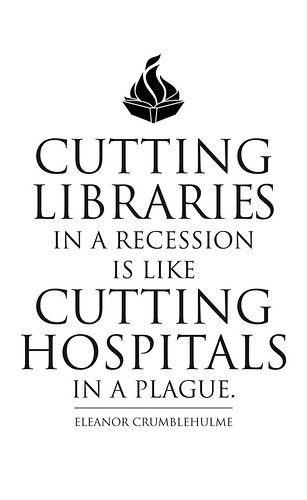
When PG&E began its 2006-2008 program, it figured the useful life of each bulb would be 9.4 years. Now, with experience, it has cut the estimate to 6.3 years, which limits the energy savings. Field tests show higher burnout rates in certain locations, such as bathrooms and in recessed lighting. Turning them on and off a lot also appears to impair longevity.
California utilities have used ratepayer funds to subsidize sales of more than 100 million of the bulbs since 2006, most of them made in China. (Rather than setting off a boom in the U.S. manufacture of replacement lights)
...Subsidized bulbs cost an average of $1.30 in California versus $4 for bulbs not carrying utility subsidies.
When it set up its bulb program in 2006, PG&E Corp. thought its customers would buy 53 million compact fluorescent bulbs by 2008. It allotted $92 million for rebates, the most of any utility in the state. Researchers hired by the California Public Utilities Commission concluded earlier this year that fewer bulbs were sold, fewer were screwed in, and saved 73% less energy than the 1.7 billion kilowatt hours projected by PG&E for the 2006-2008 program. Read more at Wall street Journal
Imagine how much of an impact this has on the ecological and "dust to dust" studies?
 Economic lights going out in U.S...
Economic lights going out in U.S...These numbers account for the life of the bulb though, not the entire life cycle of the bulb. The question of whether we can be more lighting efficient by using compact fluorescent bulbs needs an in depth analysis of how much energy is required to make and recycle the bulb.
The dust-to-dust story - production
If you have a compact fluorescent light bulb, take a look at it. It's clearly more complex than your typical incandescent light bulb (your typical "in-efficient" bulb). The lamp tube of the CFL twirls in every-which direction, but there's also complexity underneath: Coating the inside of the tube is phosphor, floating around inside the tube is ~5mg of mercury vapour (not much compared to a typical mercury thermometer which has around 250mg).
There's even a 24 component microchip (officially called the ballast) in every single CFL bulb!
When your CFL dies, it's not recommended that you throw it out, this'll just increase the chances of the mercury getting out into the open. The mercury can be recycled or disposed of properly and there are specific CFL recycling programs in place. For incandescent, no guide lines, just throw it in the trash.
The tally
Although difficult to come across, I found a life-cycle study comparing CFL bulbs to incandescent bulbs, written by Dutch researchers from the Technical University of Denmark. The total energy input for the production of a CFL light bulb comes to 1.7kWh compared to 0.3kWh for a single incandescent light bulb. The inputs are summarized in the figure below.

Here's a summary of the embodied energy in a light bulb (all numbers represent energy in kWh):
| CFL | Incandescent | 8 Incandescent bulbs | |
| Glass | 0.17 | 0.11 | 0.88 |
| Plastic | 0.68 | 0 | 0 |
| Electronics | 0.66 | 0 | 0 |
| Brass | 0.18 | 0.18 | 1.44 |
| Operation* | 120 | 60 | 480 |
| Recycle** | 1.69 | 0 | 0 |
| Total | 123.38 | 60.29 | 482.32 |
** This assumes that the energy required to recycle a CFL bulb is equal to its production
Bulb for bulb, the energy "efficient" kind requires 5.7 times more energy to make than the incandescent bulbs, BUT, they last 8 times longer (1000hrs lifetime for incandescent bulbs vs 8000hrs lifetime for a CFL). So for every 1 compact fluorescent bulb that is made, 8 incandescent bulbs are made.
During the operation phase, the CFL needs 120kWh over its lifetime, whereas 1 incandescent bulb needs 60kWh or 480kWh for 8 incandescent bulbs.
The study that I cited above neglects the recycling stage, so I assumed here that it takes as much energy to recycle a CFL bulb as it takes to produce, 1.7kWh whereas an incandescent bulb is simply thrown out, and I assign 0kWh to the recycling stage of the incandescent. Advantage incandescent.
Is there a break even point anymore????

Break even point (energy wise) for a CFL bulb compared to an incandescent bulb. If the CFL bulb operates for 50hrs or more, then it will produce energy savings compared to the incandescent bulb.
Please read full from the Watt
All of these numbers are VERY sad considering the first CFL were produced in the U.S. decades ago

 David Schaller
David Schaller
![Energy Climate Czar Carol Browner vs US Pushes For 2 New Nuclear Reactors In Georgia [VIDEO]](http://3.bp.blogspot.com/_tWqvsW7WRl0/S3tS9L3BgSI/AAAAAAAAIVg/l-VZ4LBwJTs/s320/Energy+Climate+Czar+Carol+Browner+vs+US+Pushes+For+2+New+Nuclear+Reactors+In+Georgia+%5BVIDEO%5D+2.jpg)








 Bladeless Wind so 1900's
Bladeless Wind so 1900's


 HDM -
HDM - 


 "Volkswagen just unveiled a new car at the Qatar Motor Show that gets an astounding 100km for less than a liter of diesel fuel – that's the equivalent of 313 miles per gallon!
"Volkswagen just unveiled a new car at the Qatar Motor Show that gets an astounding 100km for less than a liter of diesel fuel – that's the equivalent of 313 miles per gallon! 


 y 28 – March 2, 2011, Washington, D.C.
y 28 – March 2, 2011, Washington, D.C.



 Product Liability - Provisions of this bill will assist small and large businesses by requiring proof of a "reasonable alternative design" in an alleged defective design of a product, moving Wisconsin away from the broad "consumer expectation" test. By adopting this provision, Wisconsin will join 46 other states.
Product Liability - Provisions of this bill will assist small and large businesses by requiring proof of a "reasonable alternative design" in an alleged defective design of a product, moving Wisconsin away from the broad "consumer expectation" test. By adopting this provision, Wisconsin will join 46 other states.

 Now, thanks to funding from the U.S. Department of Energy, the Wisconsin nature center that bears his name will be at the forefront in demonstrating the latest energy efficiency and renewable energy technologies to thousands of visitors every year.
Now, thanks to funding from the U.S. Department of Energy, the Wisconsin nature center that bears his name will be at the forefront in demonstrating the latest energy efficiency and renewable energy technologies to thousands of visitors every year.
